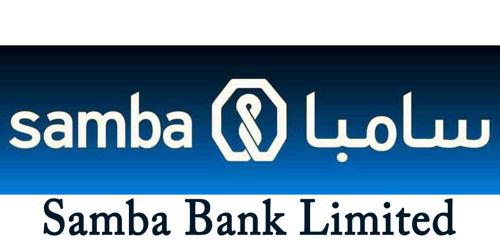Definition of Credit Risk Grading
The Credit Risk Grading (CRG) is a collective definition based on the pre-specified scale and reflects the underlying credit-risk for a given exposure.
A Credit Risk Grading deploys a number/ alphabet/ symbol as a primary summary indicator of risks associated with a credit exposure.
Credit Risk Grading is the basic module for developing a Credit Risk Management system.
Functions of Credit Risk Grading
Well-managed credit risk grading systems will promote bank safety and soundness by facilitating informed decision-making. Grading systems will measure credit risk and differentiate individual credits and groups of credits by the risk they pose. This will allow bank management and examiners to monitor changes and trends in risk levels. The process also allows bank management to manage risk to optimize returns.
Uses of Credit Risk Grading
The Credit Risk Grading matrix will allow application of uniform standards to credits to ensure a common standardized approach to assess the quality of individual obligor, credit portfolio of a unit, line of business, the branch or the bank as a whole.
As evident, the CRG outputs would be relevant for individual credit selection, wherein either a borrower or a particular exposure/facility is rated. The other decisions would be related to pricing (credit-spread) and specific features of the credit facility. These would largely constitute obligor level analysis.v Risk grading would also be relevant for surveillance and monitoring, internal MIS and assessing the aggregate risk profile of a Bank. It is also relevant for portfolio level analysis.
All Banks should adopt a credit risk grading system. The system should define the risk profile of borrower’s to ensure that account management, structure and pricing are commensurate with the risk involved. Risk grading is a key measurement of a Bank’s asset quality, and as such, it is essential that grading is a robust process. All facilities should be assigned a risk grade. Where deterioration in risk is noted, the Risk Grade assigned to a borrower and its facilities should be immediately changed. Borrower Risk Grades should be clearly stated on Credit Applications.
Risk Rating | Grade | Range of Scores | Definition |
| Superior–Low Risk |
1 Facilities fully secured by cash/bonds/ bank guaranteeGood-Satisfactory Risk
285+Repayment capacity of the borrower is strong.Acceptable–Fair Risk375-94Adequate financial strength.Marginal – Watch list
465-74Grade 4 assets warrant greater attention due to conditions affecting the borrower, the industry or the economic environment.Special Mention
555-64Assets with potential weaknesses that deserve close attention. If left uncorrected, may result in a determination of the repayment prospects of the borrower.Substandard
645-54Financial condition is weak and capacity or inclination to repay is in doubt. These weaknesses jeopardize the full settlement of loans.Doubtful and Bad
(non-performing)
735-44Full repayment of principal and interest is unlikely and the possibility of loss is extremely high.Loss
(non-performing)
8<35Assets with long outstanding with no progress in obtaining repayment. The prospect of recovery is poor and legal options have been pursued.
Regulatory Definition on Grading of Classified Accounts:
Irrespective of credit score obtained by a particular obligor, grading of the classified names will be in line with Bangladesh Bank guidelines on classified accounts, which is extracted from “Prudential Regulation For Banks: Selected Issues” (updated) by Bangladesh Bank as under the basis for Loan Classification:
(A) Objective Criteria:
Any Continuous Loan if not repaid/renewed within the fixed expiry date for repayment will be treated as irregular just from the following day of the expiry date. This loan will be classified as Sub-standard if it keep irregular for 6 months or beyond but less than 9 months, as `Doubtful’ if for 9 months or beyond but less than 12 months and as `Bad-Debt’ if for 12 months or beyond.
Any Demand Loan will be considered as Sub-standard if it remains unpaid for 6 months or beyond but not over 9 months from the date of claim by the bank or from the date of creation of the forced loan; likewise the loan will be classified as “Doubtful’ and Bad & loss if remains unpaid for 9 months or beyond but less than 12 months and for 12 months and beyond respectively.
In case any installment(s) or part of installment(s) of a Fixed Term Loan is not repaid within the due date, the amount of unpaid installment (s) will be termed as `defaulted installment’
In case of Fixed Term Loans, which are repayable within maximum 5(five) years of time: –
If the amount of ‘defaulted installment’ is equal to or more than the amount of installment (s) due within 6 months, the entire loan will be classified as ’Sub-standard’. If the amount of ‘defaulted installment’ is equal to or more than the amount of installment(s) due within 12 months, the entire loan will be classified as ”Doubtful. If the amount of ‘defaulted installment’ is equal to or more than the amount of installment (s) due within 18 months, the entire loan will be classified as ”Bad -Debt.”
In case of Fixed Term Loans, which are repayable in more than 5(five) years of time: –
If the amount of defaulted installment is equal to or more than the amount of installment(s) due within 12 months, the entire loan will be classified as ‘Sub-standard.’
If the amount of defaulted installment is equal to or more than the amount of installment(s) due within 18 months, the entire loan will be classified as ‘Doubtful’.
If the amount of defaulted installment is equal to or more than the amount of installment(s) due within 24 months, the entire loan will be classified as ‘Bad-Debt’.
Explanation: If any Fixed Term Loan is repayable at monthly installment, the amount of installment (s) due within 6 months will be equal to the amount of summation of 6 monthly installments. Similarly, if repayable at quarterly installment, the amount of installment(s) due within 6 months will be equal to the amount of summation of 2 quarterly installments.
(B)Qualitative Judgment:
If any uncertainty or doubt arises in respect of recovery of any Continuous Loan, Demand Loan or Fixed Term Loan, the same will have to be classified on the basis of qualitative judgment be it classifiable or not on the basis of objective criteria.
If any situational changes occur in the stipulations in terms of which the loan was extended or if the capital of the borrower is impaired due to adverse conditions or if the value of the securities decreases or if the recovery of the loan becomes uncertain due to any other unfavorable situation, the loan will have to be classified on the basis of qualitative judgment. Besides, if any loan is illogically or repeatedly re-scheduled or the norms of re-scheduling are violated or instances of (propensity to) frequently exceeding the loan-limit are noticed or legal action is lodged for recovery of the loan or the loan is extended without the approval of the proper authority, it will have to be classified on the basis of qualitative judgment.
Despite the probability of any loan’s being affected due to the reasons stated above or for any other reasons, if there exists any hope for change of the existing condition by resorting to proper steps, the loan, on the basis of qualitative judgment, will be classified as ‘Sub-standard ‘. But even if after resorting to proper steps, there exists no certainty of total recovery of the loan, it will be classified as ‘ Doubtful ‘ and even after exerting the all-out effort, there exists no chance of recovery, it will be classified as ‘ Bad-Debt ‘ on the basis of qualitative judgment and can declassify the loans if qualitative improvement does occur.
But if any loan is classified by the Inspection Team of Bangladesh Bank, the same can be declassified with the approval of the Board of Directors of the bank. However, before placing such case to the Board/CEO and concerned branch manager shall have to certify that the conditions for declassification have been fulfilled. The bank will have to inform such declassification’s to the Department of Banking Inspection/concerned offices of Bangladesh Bank within 15 days of such decision taken by the Board of Directors. Bangladesh bank will examine these matters on case to case basis and if any irregularities/deviations are detected is detected, necessary legal action will be taken against the concerned officials.
















